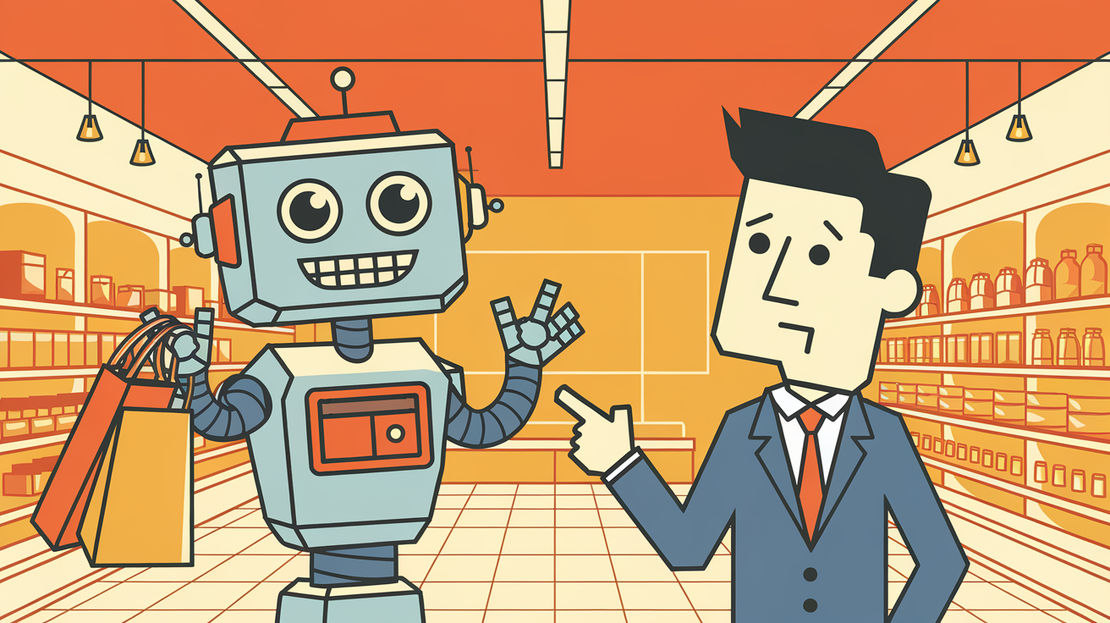
Unveiling E-Commerce's Future: Retail Revolution Ahead
- Piotr Wilniak
- January 2, 2025
Table of Contents
In the rapidly evolving landscape of e-commerce, staying ahead of the curve is crucial for thriving businesses. This article explores the latest updates and trends shaping the industry, from enhanced AI-driven customer experiences to streamlined logistics. Discover how these innovations can enhance efficiency, improve customer loyalty, and drive sales growth. With insights into market leaders’ strategies, executives will gain a valuable perspective on leveraging these updates to gain a competitive edge in the digital marketplace.
The Significance of E-Commerce Evolution for Businesses
In a world where digital commerce is booming, with sales exceeding $5.5 trillion, businesses need to ask themselves: are they just participating or truly thriving? The rapid pace at which consumers embrace digital change demands agility from companies. Take Warby Parker, for example, which transformed eyewear shopping by combining the ease of online shopping with the in-store experience. This is more than just adapting; it’s evolving—a crucial difference. As trends change, those who pivot well can gain up to 30% more customer loyalty. So, the question remains: are you ready to reshape norms and tap into the limitless potential of e-commerce?
Harnessing AI for Personalized Shopping Experiences
As digital landscapes evolve, integrating AI in e-commerce opens exciting opportunities to go beyond traditional limits. By using advanced algorithms, retailers can provide recommendations that both engage and convert, boosting sales up to 30%. The real power, however, is in personalization, where engagement rates can increase by 80%, building strong customer loyalty. Take Stitch Fix, for example, a company that has transformed shopping by offering personalized clothing selections. This isn’t just adapting; it’s rethinking the shopping experience. With such potential available, are we just scratching the surface of what’s possible? As AI continues to change consumer expectations, businesses need to ask themselves if they’re ready to use this technology to not only meet but predict and shape customer desires. In a market full of possibilities, the choice is clear—innovate or fall behind.
Streamlining Operations: Innovations in Logistics and Supply Chain Management
In today’s fast-paced world of e-commerce, where customers expect more than ever, efficient logistics and supply chain management are crucial. Did you know that 57% of online shoppers have ditched brands because of poor experiences? This should be a wake-up call. How smoothly your operations run directly affects customer loyalty. Companies that have nailed their supply chain often enjoy a big boost in customer satisfaction. In fact, 93% of shoppers prefer brands with easy return policies. So, what does this mean for your business? Are you using these insights to build loyalty and trust? As we explore new possibilities, it’s time to rethink how logistics can not only meet but anticipate customer needs. In this environment, innovation isn’t just a nice-to-have; it’s essential.
The Power of Mobile Commerce and Social Media in Shaping Consumer Choices
In the fast-changing world of digital commerce, mobile technology and social media have dramatically changed how consumers behave. With mobile commerce making up an impressive 72.9% of all e-commerce sales in 2021, its impact is clear. But what’s really interesting is the big shift these numbers represent. Are businesses truly taking advantage of this mobile trend or just going along for the ride? Social media, influencing 54% of consumer buying decisions, plays a huge role in shaping brand stories and connecting with audiences. Brands like Glossier have used social platforms to create not just a customer base but a community, growing through genuine interactions. This brings up an important question: are we using these platforms just as tools, or are we tapping into their full potential to build deeper connections with consumers? As the digital world keeps evolving, are we ready to rethink how we engage with consumers and push forward with innovation?
Harnessing Technology: Market Leaders’ Competitive Strategies
In the fast-paced race to dominate the digital marketplace, the leaders are those who boldly invest in technology. As we find ourselves in 2025, top retailers are putting 30% of their revenue into tech upgrades. This isn’t just a defensive move; it’s a catalyst for change. It’s not about just riding the wave; it’s about setting the course. Consider how data analytics has turned marketing into a personalized art form, boosting conversion rates by an impressive 20%. Is this a shift from traditional methods to a more nuanced, data-driven future?
The rise of automated customer service solutions offers an exciting possibility: a 25% reduction in operational costs. Improving profit margins isn’t just a dream—it’s a reality. But as businesses adopt these strategies, a bigger question arises: is it enough to just adopt technology, or do we need to innovate in how we apply it? Companies using omnichannel strategies have seen a 15% increase in sales. But are they ready for the next leap in customer expectations? As technology reshapes the competitive landscape, those who go beyond conventional methods can redefine industry standards. Are you ready to lead this charge, or will you watch from the sidelines?
Summary
In the rapidly evolving realm of e-commerce, businesses face a pivotal choice: adapt or lead the charge. With digital sales surpassing $5.5 trillion, companies must decide if they’re merely participating or truly innovating. Warby Parker and Stitch Fix exemplify this evolution, blending online and in-store experiences and leveraging AI for personalization, respectively. This raises a critical question: are you prepared to redefine norms and unlock e-commerce’s full potential? Efficient logistics, mobile commerce, and social media are reshaping consumer expectations, demanding that brands not only meet but anticipate needs. As top retailers invest significantly in technology, it’s clear that innovation, not mere adoption, is the key to staying ahead. Are you ready to push boundaries and set the course for the future of digital commerce?


